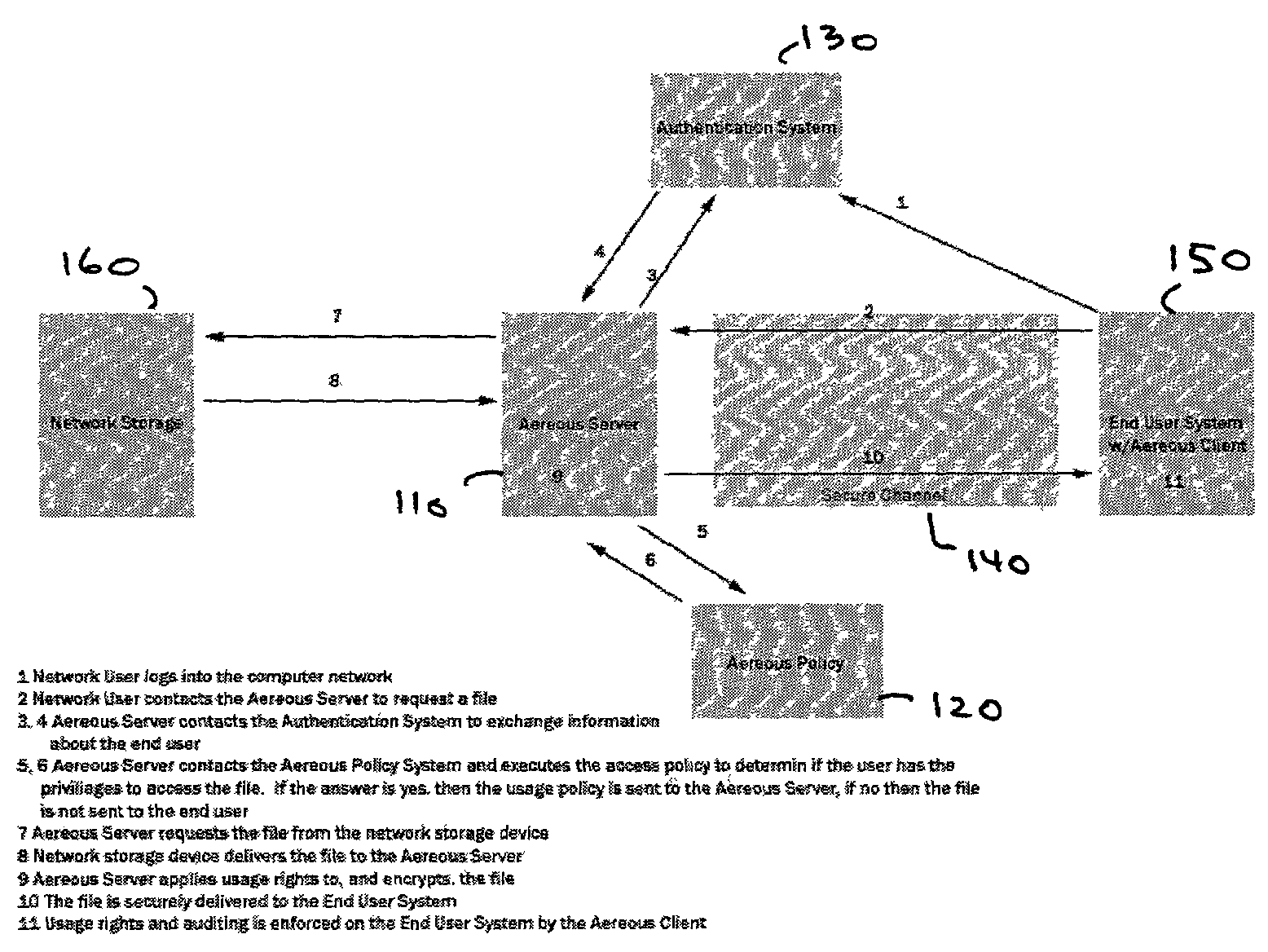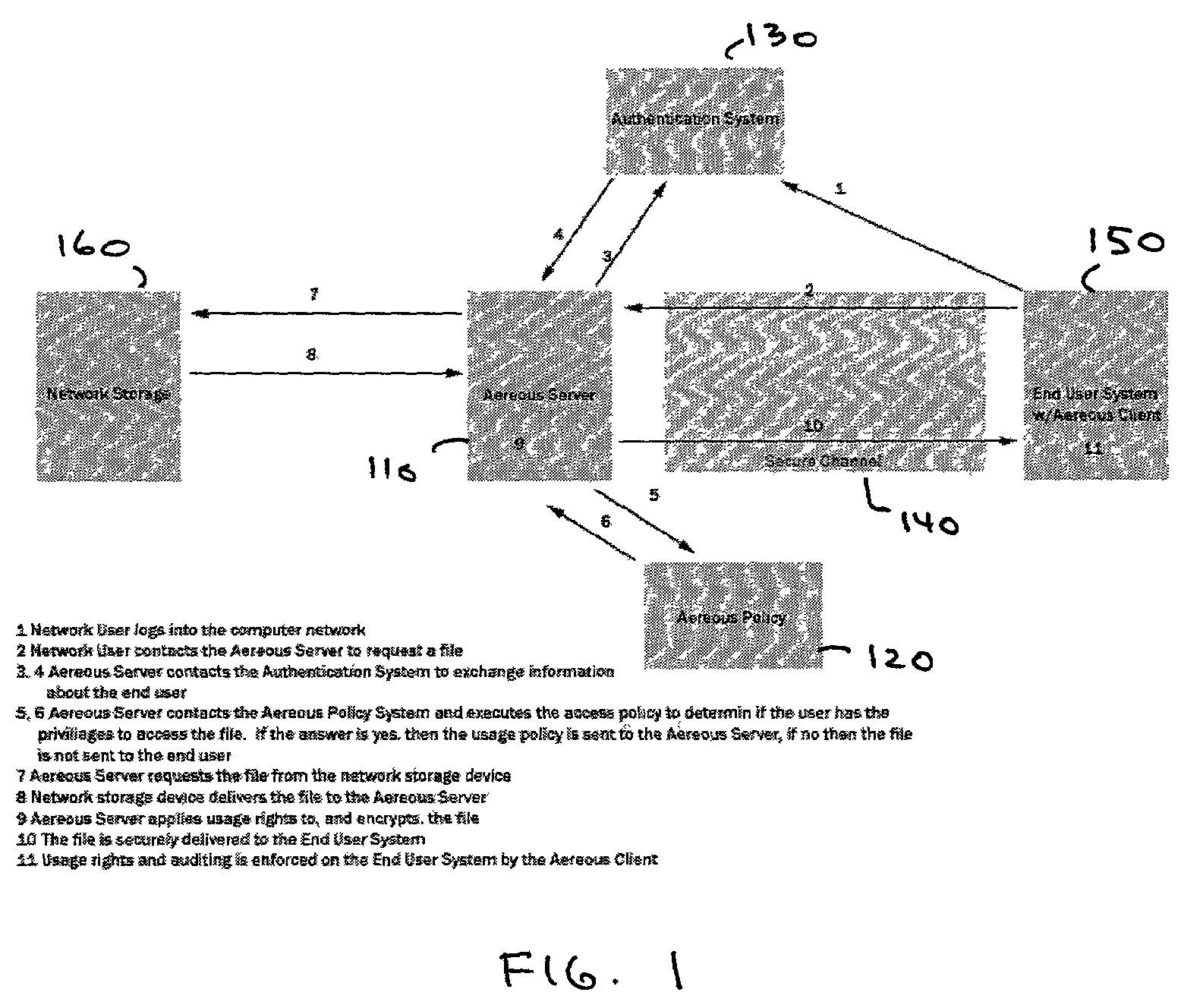Dynamic file access control and management
a file access control and dynamic file technology, applied in the field of dynamic file access control and management, can solve the problems of data sharing creating significant problems, content can be illegally duplicated (or “pirated”), and privacy can be compromised, so as to achieve the effect of improving file security
- Summary
- Abstract
- Description
- Claims
- Application Information
AI Technical Summary
Benefits of technology
Problems solved by technology
Method used
Image
Examples
Embodiment Construction
[0056]A dynamic file access control and management system and method in accordance with the present invention may be a proxy file management system that includes one or more file system proxy servers that provide selective access and usage management to files available from one or more file systems or content sources. The present invention may embody a secure transport protocol that tunnels distributed file systems, application independent usage controls connected to files on end-user computers, dynamically merging secondary content to a requested file, and applying bandwidth management to any of the foregoing. Embodied in the various implementations of the present invention is enhanced file security. Preferably, the proxy file management system is transparent to an end-user.
1. System Overview
[0057]A proxy file management system in accordance with the present invention extends accepted network storage systems (and other content sources) with a security infrastructure appropriate for...
PUM
 Login to View More
Login to View More Abstract
Description
Claims
Application Information
 Login to View More
Login to View More - R&D
- Intellectual Property
- Life Sciences
- Materials
- Tech Scout
- Unparalleled Data Quality
- Higher Quality Content
- 60% Fewer Hallucinations
Browse by: Latest US Patents, China's latest patents, Technical Efficacy Thesaurus, Application Domain, Technology Topic, Popular Technical Reports.
© 2025 PatSnap. All rights reserved.Legal|Privacy policy|Modern Slavery Act Transparency Statement|Sitemap|About US| Contact US: help@patsnap.com



